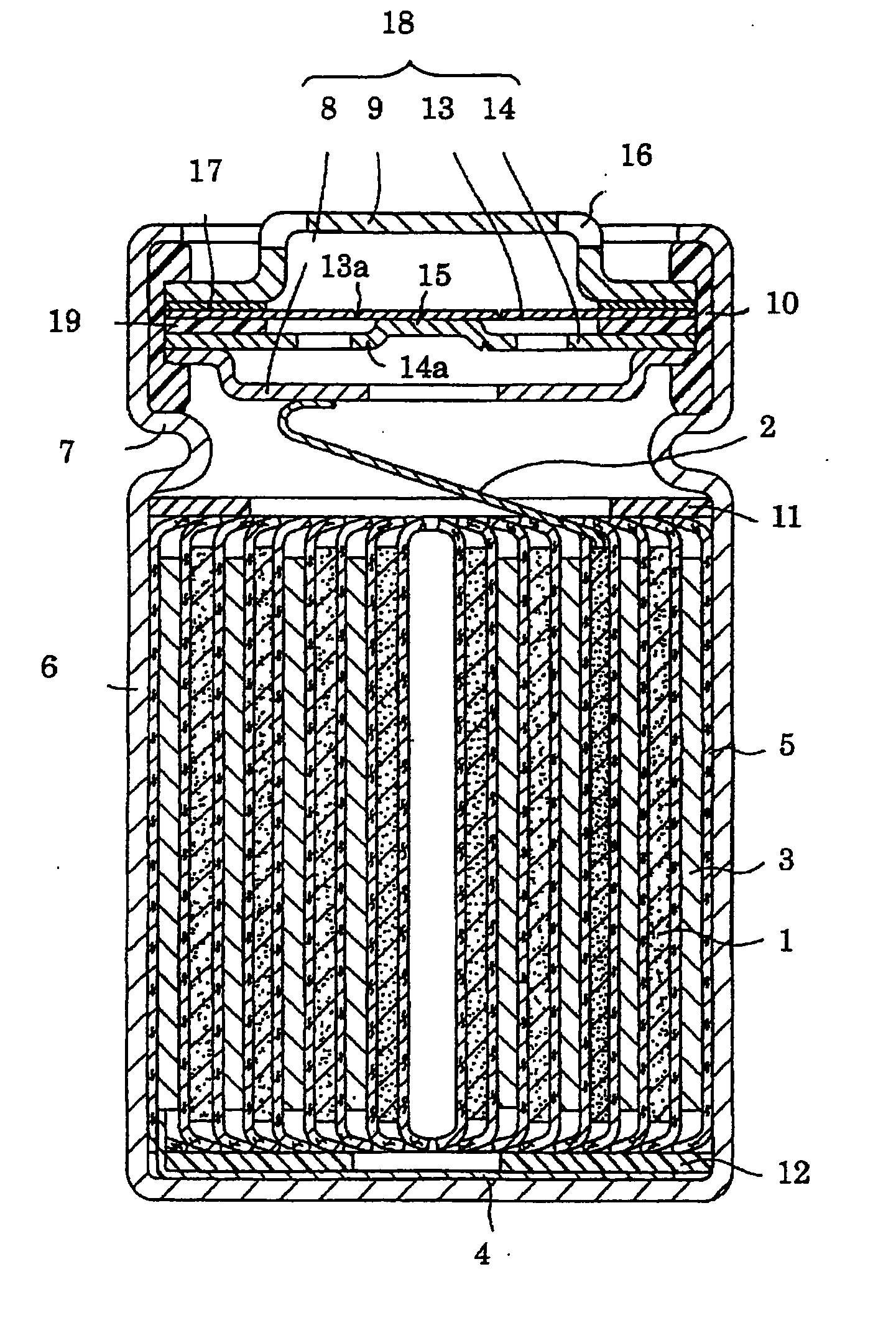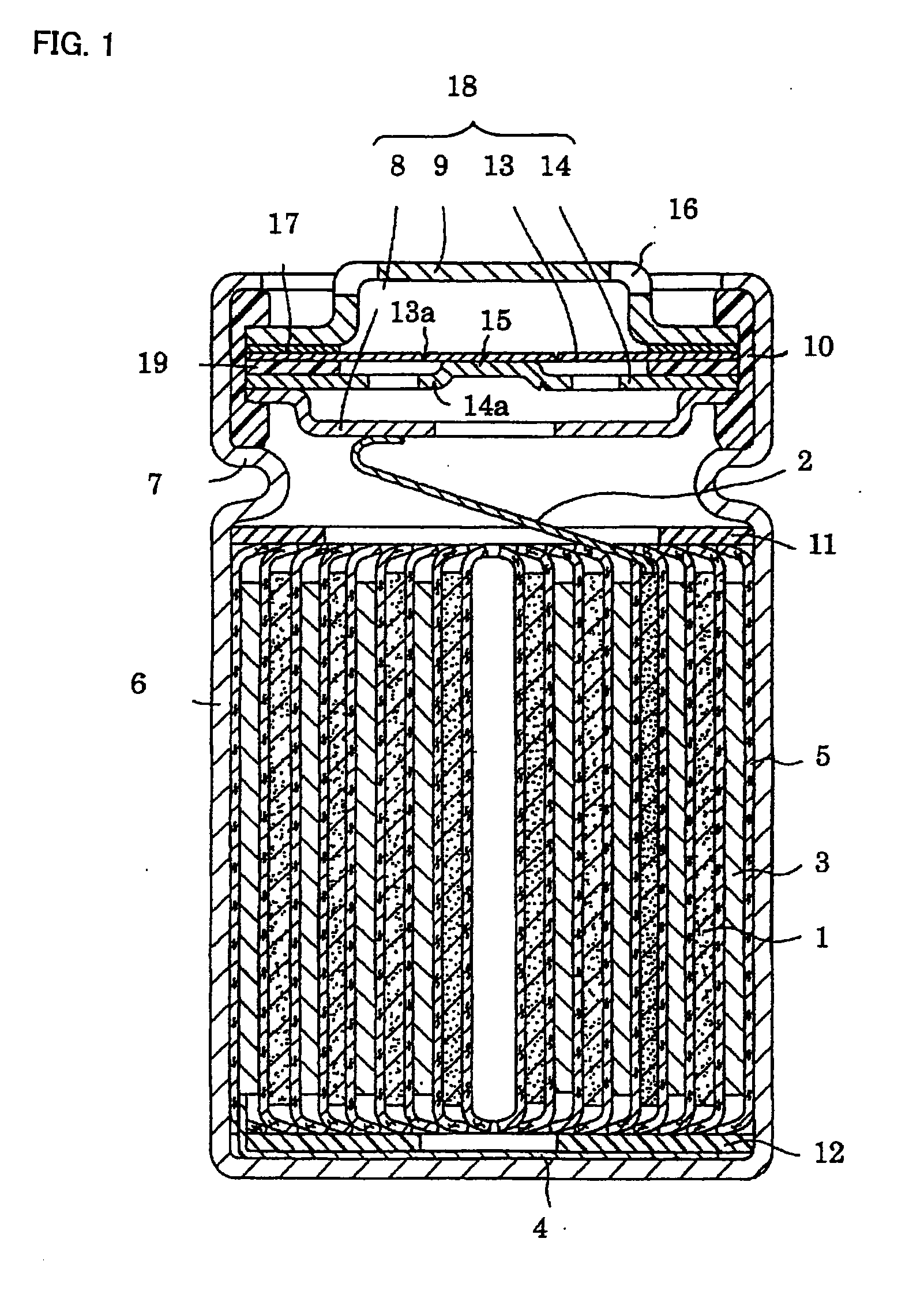Nickel hydroxide, method for producing positive electrode active material for non-aqueous electrolyte secondary battery, electrode for non-aqueous electrolyte secondary battery, and non-aqueous electrolyte secondary battery
a technology of non-aqueous electrolyte and active material, which is applied in the direction of nickel compounds, sustainable manufacturing/processing, cell components, etc., can solve the problems of low battery capacity, low packing density of lithium nickel composite oxide in the active material layer, and high specific capacity of electrode pressing materials, etc., to achieve excellent electrode pressing characteristics and without lowering the specific capacity as an active material
- Summary
- Abstract
- Description
- Claims
- Application Information
AI Technical Summary
Benefits of technology
Problems solved by technology
Method used
Image
Examples
example 1
[0080]While an aqueous solution of 2 mol / L nickel sulfate, an aqueous solution of 0.353 mol / L cobalt sulfate, and an aqueous solution of 5 mol / L ammonium nitrate were continuously injected into a reaction vessel equipped with a stirrer, an aqueous solution of 10 mol / L sodium hydroxide was injected therein in such a manner that the pH inside the reaction vessel was automatically maintained at 11.1 to 11.5. Also, sodium sulfate was added to adjust the salt concentration so that the electrical conductivity was 80 mS / cm to 150 mS / cm. The temperature inside the reaction vessel was maintained at 40° C., and stirring was continuously made by the stirrer. The hydroxide produced was taken out by causing it to overflow through an overflow pipe, washed with water, dehydrated, and dried. In this way, nickel hydroxides 1 to 13 of composition formula Ni0.85Co0.15(OH)2 were prepared.
[0081]Also, by using the same synthesis procedure as that described above, but changing the aqueous solution of the ...
examples 2 to 15
[0094]Cylindrical lithium secondary batteries of the invention were produced in the same manner as in Example 1, except for the use of the positive electrode active materials 4 to 11, 15, 18, 21, 24, 27, and 30 instead of the positive electrode active material 3.
PUM
| Property | Measurement | Unit |
|---|---|---|
| particle size | aaaaa | aaaaa |
| tap density | aaaaa | aaaaa |
| particle size | aaaaa | aaaaa |
Abstract
Description
Claims
Application Information
 Login to View More
Login to View More - R&D
- Intellectual Property
- Life Sciences
- Materials
- Tech Scout
- Unparalleled Data Quality
- Higher Quality Content
- 60% Fewer Hallucinations
Browse by: Latest US Patents, China's latest patents, Technical Efficacy Thesaurus, Application Domain, Technology Topic, Popular Technical Reports.
© 2025 PatSnap. All rights reserved.Legal|Privacy policy|Modern Slavery Act Transparency Statement|Sitemap|About US| Contact US: help@patsnap.com


